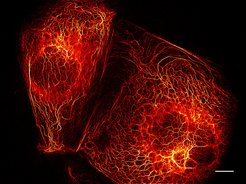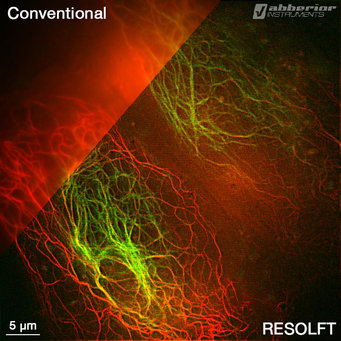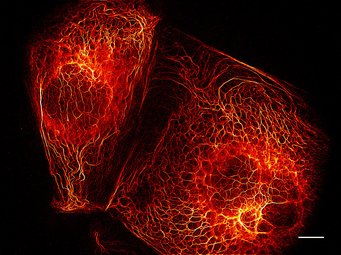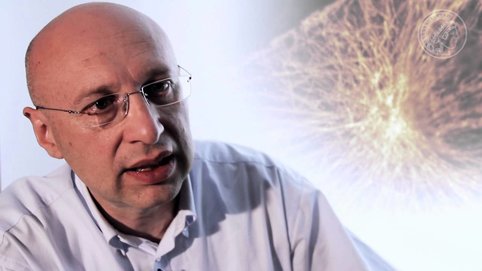About Stefan Hell's research
Nobel Prize in Chemistry 2014

With the invention of the STED (Stimulated Emission Depletion) microscopy experimentally realized by Hell in 1999, he has revolutionized light microscopy. Conventional light microscopes reach their resolution limit when two similar objects are closer than 200 nanometers (millionth of a millimeter ) to each other because the diffraction of light blurs them to a single image feature. This limit discovered about 130 years ago by Ernst Abbe – and chiseled in stone in a memorial in Jena (Germany) – had been considered an insurmountable hurdle. The same limit by diffraction also applies to fluorescence microscopy which is frequently used in biology and medicine. For biologists and physicians, this meant a massive restriction – because for them the observation of much smaller structures in living cells is decisive.
Microscopy no longer limited by diffraction
The 51-year-old physicist Stefan Hell was the first to radically overcome the resolution limit of light microscopes – with an entirely new concept. STED microscopy, invented and developed by him to application readiness, is the first focused light-microscopy method which is no longer fundamentally limited by diffraction. It allows an up to ten times greater detailed observation in living cells and makes structures visible that are much smaller than 200 nanometers.

In order to overcome the phenomenon of light diffraction, he and his team apply a trick. The focal spot of the fluorescence excitation beam is accompanied by a doughnut-shaped „STED beam“ that switches off fluorophores at the spot periphery, by effectively confining them to the ground state. In contrast, molecules at the doughnut center can dwell in the fluorescence „on“ state and fluoresce freely. The resolution is typically improved by up to ten times compared with conventional microscopes, meaning that labelled protein complexes with separation of only 20-50 nanometers can be discerned. As the brightness of the STED beam is increased, the spot in which molecules can fluoresce is further reduced in size. As a consequence, the resolution of the system can be increased, in principle, to molecular dimensions.
By developing special fast recording techniques for the STED microscopy, Hell’s team further succeeded in recording fast movements within living cells. They reduced the exposure time for single images in such a dramatic way that they could film in real-time the movements within living nerve cells with a resolution of 65 to 70 nanometers – a 3 to 4 times better resolution compared to conventional light microscopes.
With his outstanding work Stefan Hell has pushed open a door towards new insights into what happens on the molecular scale of life – a door which was believed for a long time to be non-existent. STED microscopy offers plenty of potential for research on disease or the development of drugs.



